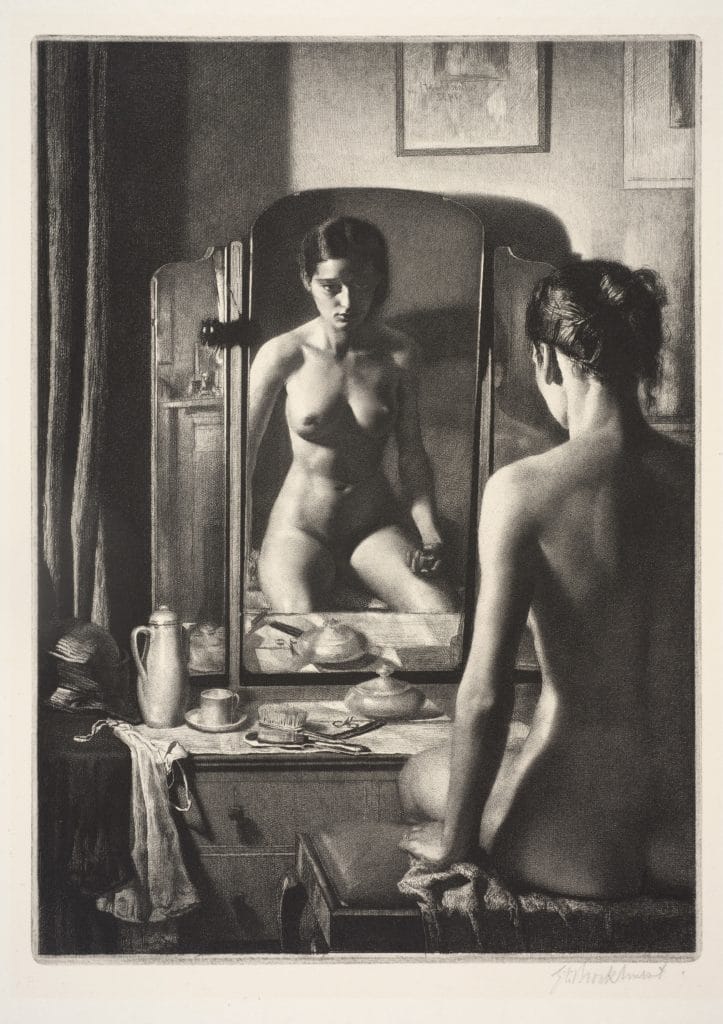Gerald Brockhurst: A Private Collection
February 1–28, 2018
Fine Art Society, London
In London, the Fine Art Society is set to present an exhibition of etchings and lithographs by the British-American artist Gerald Brockhurst (1890–1978). Created between 1920 and 1945, the 50 works in this private collection cover the artist’s entire printmaking practice; all are illustrated in the accompanying catalogue.

Born in Birmingham, England, in 1890, Brockhurst showed signs of artistic promise while very young: the headmaster of the Birmingham School of Art even announced that he had discovered “a young Botticelli.” It was there that the boy encountered the work of the 19th-century Pre-Raphaelite painters who, along with Italian Renaissance masters, would inspire the formation of his own style.

Brockhurst ultimately became one of London’s most successful portrait painters, but he was also an accomplished draftsman and etcher. At a time when the market for contemporary etching was growing, he quickly mastered this technique and published his first examples in 1920. Translating his imagery from oil to ink, he produced exceptionally detailed portraits and figure studies, in opposition to the contemporary taste for landscapes and cityscapes.

Brockhurst’s uncompromisingly truthful portraits are very much a product of their time: from the careful depiction of women’s fashion, makeup, and hairstyles (his subjects included the Duchess of Windsor, Marlene Dietrich, and the actress Merle Oberon) to the powerful posture and expensive suits of such American male sitters such as J. Paul Getty and Jacob Burns.

If Brockhurst had a long list of cosmopolitan sitters to paint, the primary models for his etchings were his first and second wives. The first, Anaïs Mélisande Folin, patiently posed for dozens of images yet, out of 20 portrayals of her included in this exhibition, only one bears her name, Mélisande.
Brockhurst’s second wife was Kathleen Woodward, a young model at the Royal Academy of Arts, whom he renamed Dorette. She became a fixture of Brockhurst’s paintings and prints, of which Adolescence (1932) is widely considered his masterpiece. The largest etching in the exhibition, it presents her admiring her own nude reflection in the mirror. This charged depiction of teenage anxieties is as much a psychological portrait as a physical one. It is also a work of extreme technical mastery, where objects, surfaces, lights, and shades are beautifully captured.
Learn more about Gerald Brockhurst here.
Sign up to receive Fine Art Today, the weekly e-newsletter from
Fine Art Connoisseur magazine.








